
Crests, on birds that have them, are feathers extending from a
bird’s head. Different configurations might be named crest, hood,
horns, or ears. This is a female Hooded Merganser (2014/04/27).
Only a few birds sport crests. A bird with a crest can raise or lower it, but will raise (erect) it to communicate aggression or sexual arousal.
While a crest is sometimes lowered (collapsed) on a perched or floating bird, the crest always seems to be collapsed on a flying bird.
The reason a bird would collapse a crest when flying is fairly obvious: an erect crest during flight would produced extra aerodynamic drag. This would make flying more arduous and induce the bird’s head to tip upward, problems easily avoided by collapsing the crest.
It took me a long time before I noticed the pattern whereby a crested bird systematically collapses its crest during flight. Why was this pattern so difficult to spot?
• First, much of the difficulty seems to come from the problem of spotting a behavioural negative: a crest not erected. Indeed, the literature on a bird’s crest seems to concentrate on occasions when crested birds show them — not when they systematically do not.
• Second, even collecting evidence of a crested bird’s appearance during flight is difficult merely because the photography is difficult. Evidence for this is easily obtained with a web search of the image of a small bird. The fraction showing flight is small. (I even wrote an essay about the reason for the problem.)
Given these difficulties, my small sample, below, can only be suggestive of a consistent behaviour of flying with crest lowered.
Granted, the crest is not always displayed even when the bird is moving slowly, but I will show pictures when it is. Then I show pictures of the bird flying, a time when I have never seen a crest deployed.
I start with the bird where I first recognized the behaviour, but not the broader pattern: the Great Horned Owl. The horns are merely the owl’s crests, which seem always to be deployed except during flight. A perched owl displays its horns, but then flying, the owl collapses its horns.

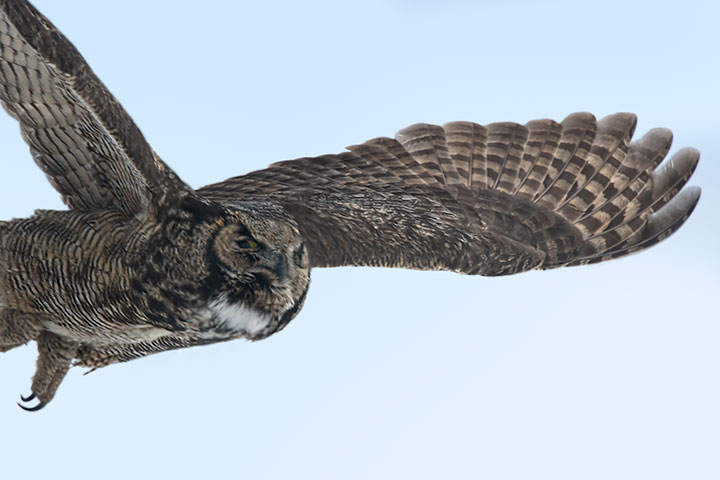
Unliked the Great Horned Owl, the Double-crested Cormorant only shows crests briefly during breeding season. Two white crests are seen in the first picture, but even though the second picture shows aggression, because the cormorant is flying, the crests are collapsed. Taken together, the owl and the cormorant prompted me to look through my pictures for other examples. I found none where a crested bird hadn’t collapsed it during flight.
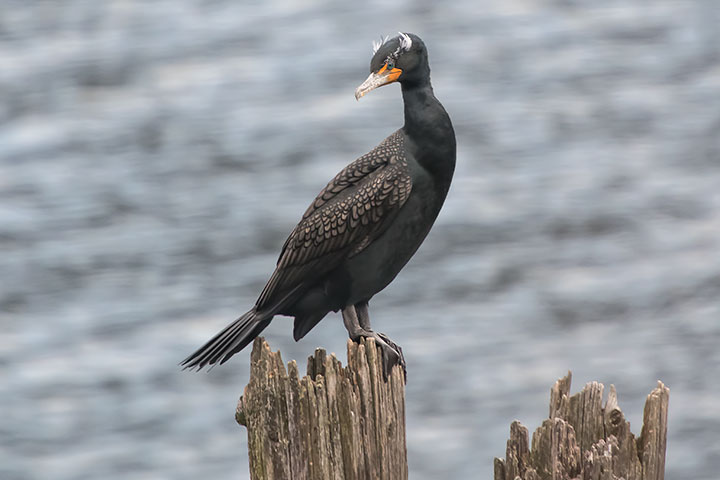
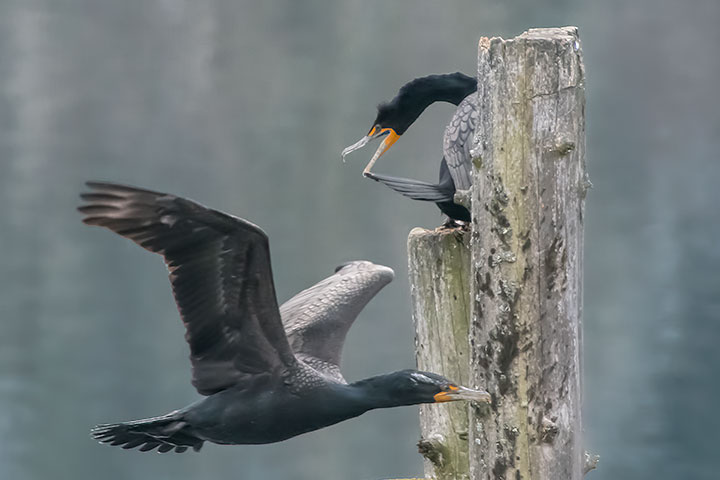
The Belted Kingfisher frequently has its crest erected when perched, but not always. I have seen it fly many times but always with its crest flattened (next picture).

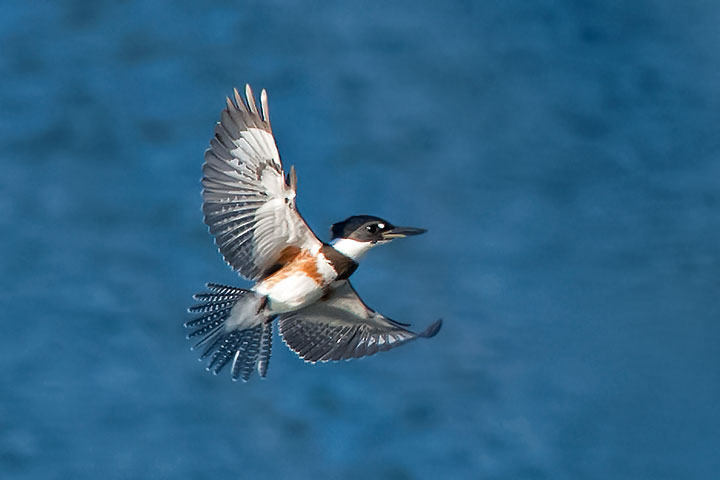
Both male and female Hooded Mergansers erect crests in response to sexual arousal. However, even when flying together, the crests are flattened.
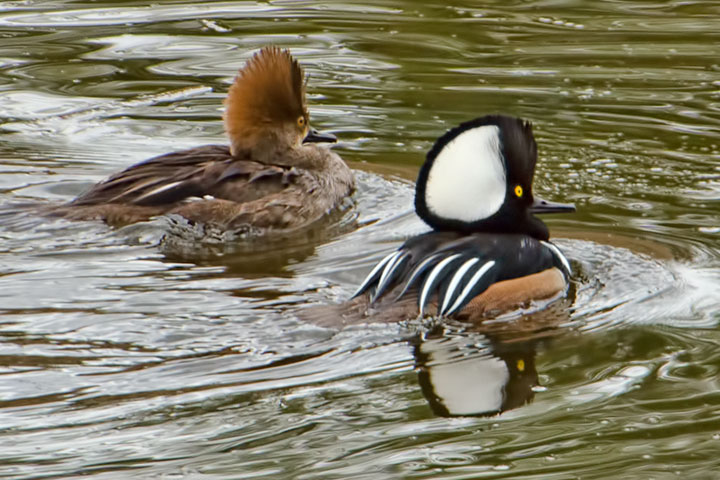
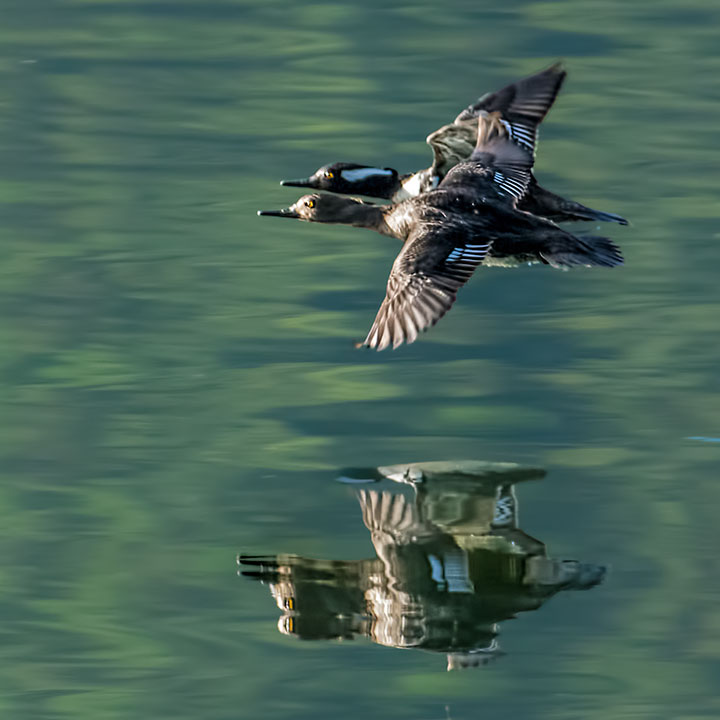
The Steller’s Jay is rarely seen without its large crest erected. That is, until it flies.

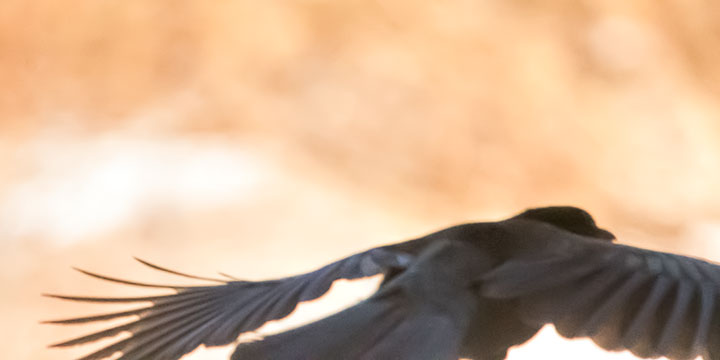
Both the Bohemian and Cedar Waxwings raise their crests only occasionally. But, when flying, each has it lowered. I illustrate this with a perched Cedar Waxwing and a flying Bohemian, although I could have done it the other way around.
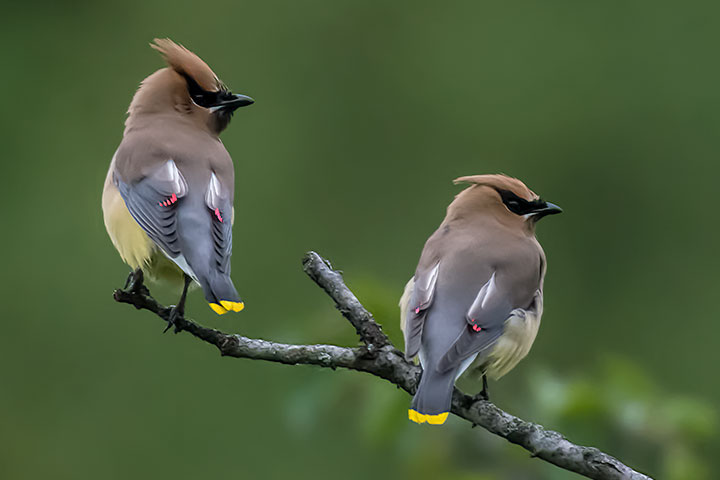

My final illustration is particularly interesting as it requires three pictures to discuss. First is a female Common Merganser with her chicks. She has a raised crest. The second shows both a female and male flying with crests lowered. Finally, birds planing is another time where speed is needed and so the crest is lowered to reduce drag. (See my essay on planing water birds.)
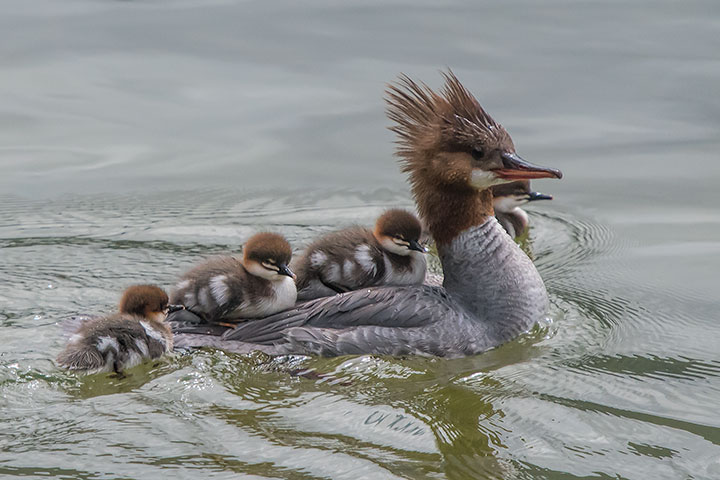
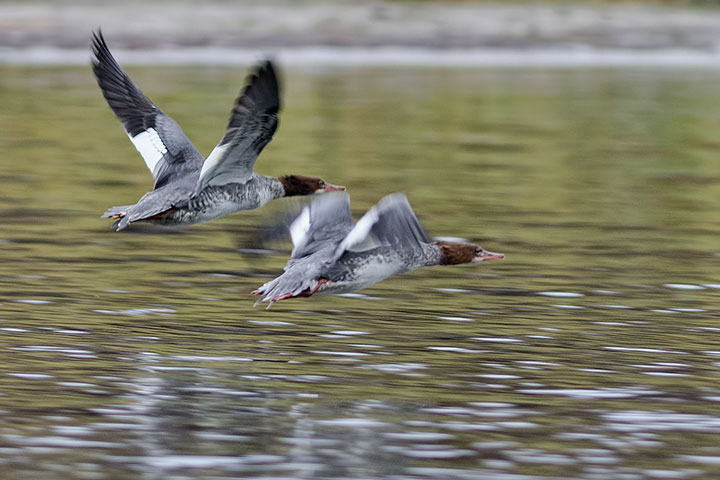
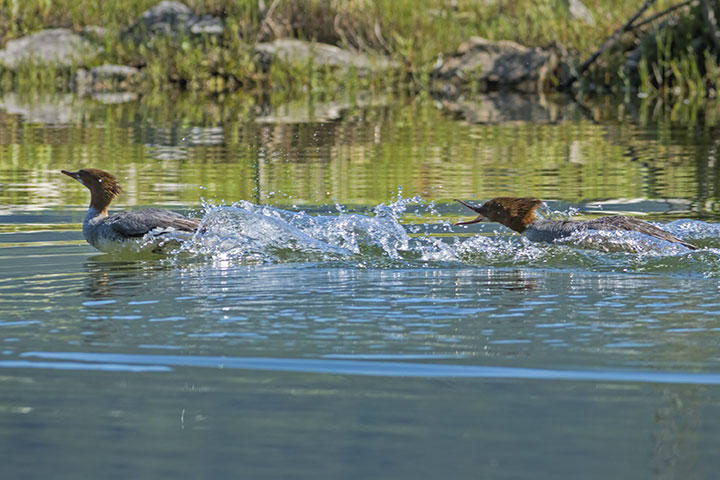
There appears to be a consistent pattern here: When crested birds need speed, they lower their crests to minimize aerodynamic drag.

Really fascinating, thanks as always, Alistair!
Always enjoy your depth of interest and information.
I would listen to just about any of your natural history observations as long as I could look at your photography…. When others poo poo natural history photography as being derivative- that we have far too many repetative images of most species- I say back off… Alistair and a few others are out their capturing gorgeous new takes on some old acquaintences.
I’m with Michael! Wonderful post. Thanks again Alistair.